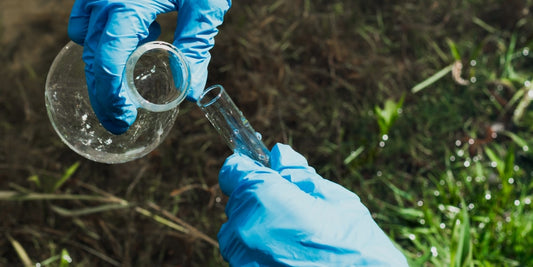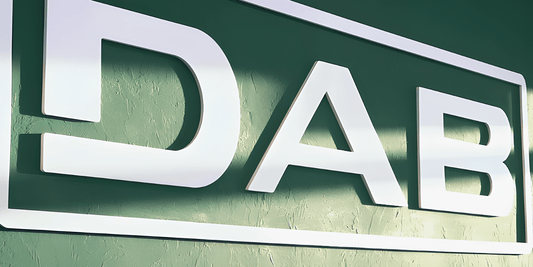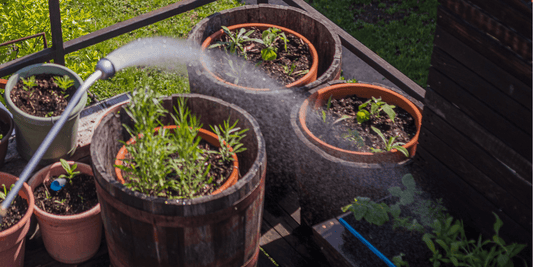Understanding pH Correction in Clean Water: Why It Matters and How It’s Done
Share
Clean water is vital for human health, agriculture, and industrial processes. But when it comes to ensuring water is both safe and effective for these purposes, one critical factor often overlooked is pH.
pH correction plays a key role in maintaining water quality, ensuring that it is neither too acidic nor too alkaline. In this post, we’ll explore what pH is, why correcting pH in clean water matters, and the methods used for pH correction.
What is pH?
pH is a measure of how acidic or basic (alkaline) a substance is. The pH scale ranges from 0 to 14:
- pH 7 is neutral (pure water).
- pH less than 7 is acidic.
- pH greater than 7 is basic (alkaline).
For clean water, maintaining a balanced pH is crucial for many reasons. Water that is too acidic can be corrosive, damaging pipes and water systems, while water that is too basic may lead to scaling and the build-up of minerals.
Why pH Correction is Necessary:
Human Health and Safety:- Drinking Water: Water with a very low or very high pH can be harmful to human health. Acidic water (below pH 6.5) can leach metals such as lead and copper from pipes, which can be toxic when ingested. Alkaline water (above pH 8.5), on the other hand, may cause skin irritation and digestive issues.
- Aquatic Life: pH levels affect the health of ecosystems, particularly aquatic life. Most fish and aquatic organisms thrive within a narrow pH range (6.5-8.5). Extreme pH levels can lead to the death of these organisms and disrupt the entire ecosystem.
Water Treatment Efficiency:
- Disinfection: Many water treatment processes rely on maintaining specific pH levels. For example, chlorine, a common disinfectant, works more effectively in slightly acidic water. pH correction ensures optimal conditions for disinfection and other treatment steps.
- Chemical Balancing: Chemicals used in water treatment, such as coagulants and flocculants, are most effective within certain pH ranges. If the water's pH is too high or too low, these chemicals won’t work as efficiently, leading to poor treatment outcomes.
Infrastructure Protection:
- Corrosion Control: Acidic water can corrode metal pipes, leading to leaks, contamination, and costly repairs. Over time, this corrosion can result in the release of harmful substances like lead into the water supply. pH correction helps prevent corrosion, protecting water systems.
- Scaling Prevention: Alkaline water, on the other hand, can cause scale build-up in pipes and equipment. Scaling reduces water flow and efficiency in industrial processes and water heaters, leading to higher energy costs and maintenance needs.
Methods of pH Correction:
The method used to correct pH in clean water depends on whether the water is too acidic or too alkaline. There are several common approaches:
Acidic Water (Low pH) Correction:
-
Neutralizing
Filters: These filters are filled with materials like limestone (calcium carbonate) or magnesium oxide. When acidic water flows through these filters, the minerals dissolve into the water, raising its pH to neutral levels. This is common in homes and small-scale water treatment systems. - Chemical Feed Systems: In larger systems, acids like sodium hydroxide (NaOH) or soda ash (sodium carbonate) are added to the water. These chemicals neutralize the acidity, bringing the pH up to a desired level.
Alkaline Water (High pH) Correction: Injection
of Acids: When water is too alkaline, acids like sulfuric acid or hydrochloric acid can be injected into the water to lower the pH. This method is commonly used in industrial and large-scale municipal water treatment systems.- Carbon Dioxide Injection: Another technique involves injecting carbon dioxide (CO₂) into the water. CO₂ forms carbonic acid when dissolved in water, gently lowering the pH without the risks associated with stronger acids.
-
Buffering Systems:
Buffering agents, like bicarbonates, can be added to water to stabilize pH levels and prevent rapid fluctuations. These are especially useful in systems where pH levels might vary frequently due to changes in water source or treatment chemicals.
Effective pH correction isn’t a one-time process. Water treatment facilities and households need to monitor pH levels regularly to ensure consistency and effectiveness. Automated pH monitoring systems are commonly used in municipal and industrial settings, allowing real-time adjustments to be made to the water treatment process. For home systems, periodic testing using pH test kits is recommended, especially if using well water or a private water source.
Conclusion:
pH correction is essential for maintaining clean, safe, and functional water systems. Whether for drinking water, industrial processes, or environmental protection, proper pH management ensures that water remains within a range that supports health, safety, and efficiency. By understanding how pH works and employing the right correction methods, we can protect both our water resources and the systems that deliver them.
Maintaining balanced pH levels is a proactive step in ensuring water quality and sustainability—something that benefits us all.



